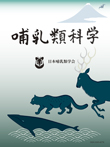Volume 62, Issue 2
Displaying 1-17 of 17 articles from this issue
- |<
- <
- 1
- >
- >|
Field Note
-
2022Volume 62Issue 2 Pages 119
Published: 2022
Released on J-STAGE: August 10, 2022
Download PDF (4006K)
Original Articles
-
2022Volume 62Issue 2 Pages 121-132
Published: 2022
Released on J-STAGE: August 10, 2022
Download PDF (1816K) -
2022Volume 62Issue 2 Pages 133-139
Published: 2022
Released on J-STAGE: August 10, 2022
Download PDF (1026K) -
2022Volume 62Issue 2 Pages 141-149
Published: 2022
Released on J-STAGE: August 10, 2022
Download PDF (1575K) -
2022Volume 62Issue 2 Pages 151-160
Published: 2022
Released on J-STAGE: August 10, 2022
Download PDF (1217K) -
2022Volume 62Issue 2 Pages 161-187
Published: 2022
Released on J-STAGE: August 10, 2022
Download PDF (3931K) -
2022Volume 62Issue 2 Pages 189-201
Published: 2022
Released on J-STAGE: August 10, 2022
Download PDF (2994K) -
2022Volume 62Issue 2 Pages 203-214
Published: 2022
Released on J-STAGE: August 10, 2022
Download PDF (13610K) -
2022Volume 62Issue 2 Pages 215-223
Published: 2022
Released on J-STAGE: August 10, 2022
Download PDF (2346K)
Short Communications
-
2022Volume 62Issue 2 Pages 225-231
Published: 2022
Released on J-STAGE: August 10, 2022
Download PDF (1637K) -
2022Volume 62Issue 2 Pages 233-237
Published: 2022
Released on J-STAGE: August 10, 2022
Download PDF (914K) -
2022Volume 62Issue 2 Pages 239-245
Published: 2022
Released on J-STAGE: August 10, 2022
Download PDF (4080K)
Reports
-
2022Volume 62Issue 2 Pages 247-255
Published: 2022
Released on J-STAGE: August 10, 2022
Download PDF (3341K) -
2022Volume 62Issue 2 Pages 257-263
Published: 2022
Released on J-STAGE: August 10, 2022
Download PDF (7755K) -
2022Volume 62Issue 2 Pages 265-277
Published: 2022
Released on J-STAGE: August 10, 2022
Download PDF (4107K)
Forum
-
2022Volume 62Issue 2 Pages 279-283
Published: 2022
Released on J-STAGE: August 10, 2022
Download PDF (883K)
Book Review
-
2022Volume 62Issue 2 Pages 285-289
Published: 2022
Released on J-STAGE: August 10, 2022
Download PDF (1026K)
- |<
- <
- 1
- >
- >|
